Present day, the United States Naval Academy, which sits at the confluence of the Severn River and Chesapeake Bay in Downtown Annapolis, is regarded as one of the top academic institutions in the entire country and is a registered National Historic Landmark, but the rich tradition and glorious pageantry associated with today’s academy grew from humble beginnings.
Following victories in the Revolutionary War and War of 1812, Secretary of the Navy George Bancroft recognized a growing need for organized systems and trained officers as America’s navy supplanted Britain’s as the most powerful fleet in the world. Despite a lack of Congressional funding, Bancroft established the Naval School on 10 acres of land at old Fort Severn on October 10, 1845. Bancroft wanted officers to be trained in a “healthy and secluded” location where they would be kept from “the temptations and distractions that necessarily connect with a large and populous city.” This mindset was instrumental in Annapolis being the location for what would one day become the United States Naval Academy, even though similar naval schools also existed in Philadelphia, New York, Norfolk, and Boston.
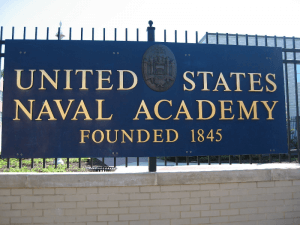
Annapolis’ Naval School officially became the United States Naval Academy in 1850, which started a transition from small scale school to an internationally acclaimed academic institution responsible for commissioning officers for the Navy and Marine Corps. The official distinction as the USNA saw the curriculum expanded to require four years of study with hands-on training on board ships during summer months. In 1933 Congress authorized the academy to award Bachelor of Science degrees and set curriculums were replaced with 21 major fields of study, a multitude of electives, and advanced research opportunities. Today’s more advanced and sophisticated programs notwithstanding, the overall structure of a Naval Academy education remains similar to the one implemented in the 1850s.
The Naval Academy campus grew from the original 10 acre plot to over 338 acres in Downtown Annapolis with modern granite buildings replacing the old wooden ones of Fort Severn and the Naval School. The initial class of 50 grew into an annual class of over 4000, each of whom must endure one of the country’s most rigorous admission processes before being accepted. Women midshipmen, who were first admitted to the academy in 1976, now comprise between 13-14% of each new Plebe (freshman) class.
Today, the United States Naval Academy, known as “The Yard,” is regarded as one of the most iconic campuses in the world. Its combination of early 20th Century and modern buildings perfectly blends the past with the present. The campus is home to the final resting place of Revolutionary War hero John Paul Jones as well as the Naval Academy Chapel; Herdon Monument; Pearl Harbor Memorial; Tripoli Monument- the oldest monument in the U.S.; Bancroft Hall- the largest college dormitory in the world; and the USNA Museum, which offers a first-hand look into the evolution of naval power and the illustrious history of the academy itself.
It’s not all about academics at the Naval Academy, however, as Navy sports have emerged onto the national scene in recent years- most notably the lacrosse and football teams. Home games for both teams are played inside Navy-Marine Corps Memorial Stadium where pageantry and tradition create an environment unmatched by any other in sports (with exception of the annual Army-Navy football game which is played at a rotating neutral location).
Other USNA athletic facilities include: Alumni Hall for basketball; Lejeune Hall, which houses an Olympic sized pool and wrestling arena; the Glenn Warner Soccer Facility; Max Bishop Stadium- home to Navy baseball; a 6,217 yard golf course; and Ingram Field, which includes a 400m synthetic surface track.
For more information about the United States Naval Academy, its history, sports, and upcoming events please visit official website at www.usna.edu or the Navy Sports Association website at www.navysports.com.


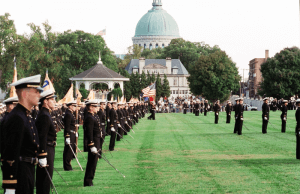
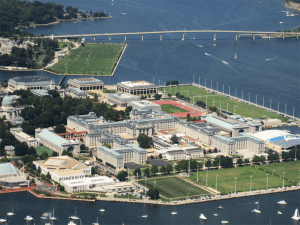
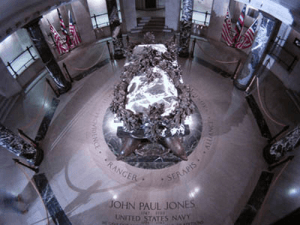
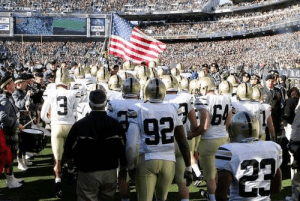




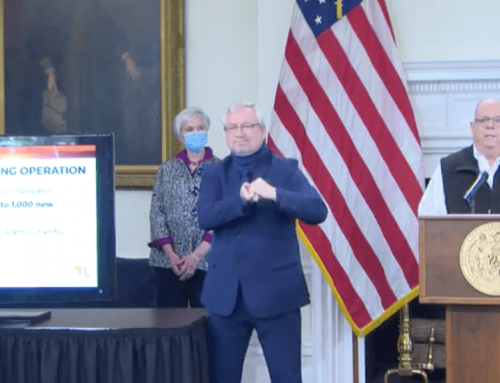
Leave A Comment